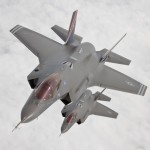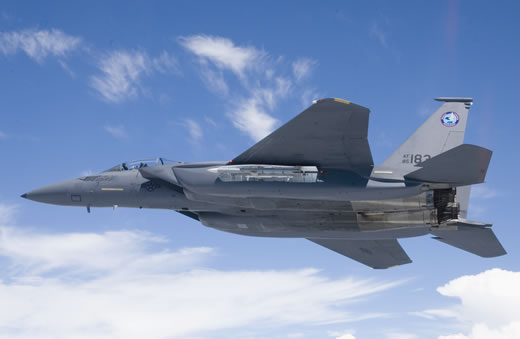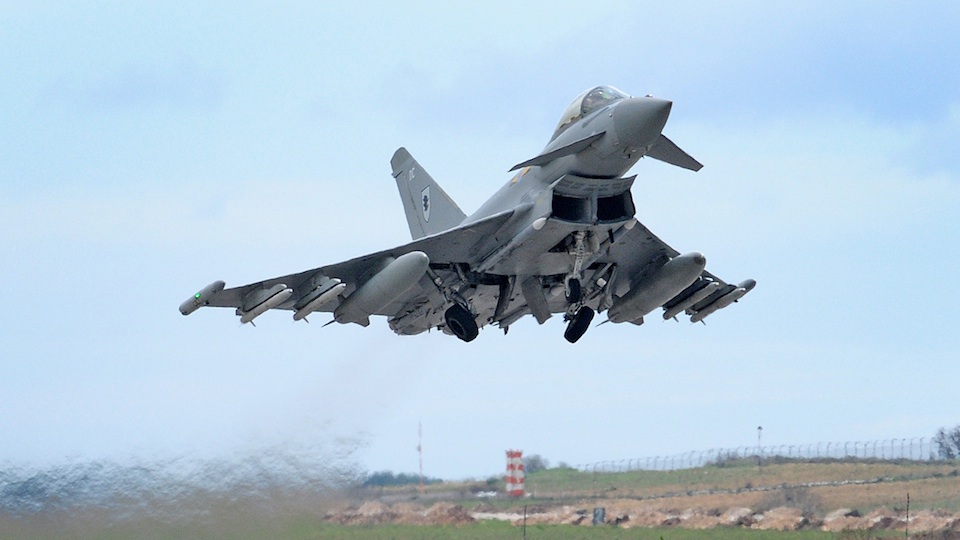
South Korea’s primary defense acquisition agency, the Defense Acquisition Program Administration (DAPA), announced that evaluations would begin next week to select the winning bid in the competition for a $7.3 billion contract for 60 advanced fighter aircraft. Previously submitted bids from three defense contractors were found to be lacking relevant details and were resubmitted, at South Korea’s request, on 5 July.
Lockheed Martin’s F-35 Lightning II, Boeing’s F-15SE Silent Eagle, and EADS’ Eurofighter Typhoon are all in competition for the multi-billion deal. The winning aircraft is intended as a replacement for the aging fighters now in South Korea’s inventory. In 2002, Seoul contracted to procure 60 Boeing F-15s as part of an extensive modernization effort and the present deal is a continuation of that program.

A DAPA statement of 5 July announced that the bids would be evaluated “in accordance with due process.” The statement also guaranteed “fair competition” and a “thorough evaluation” to select the aircraft that “most benefits our national interest.”
According to DAPA, a hand-picked team of 15 expert analysts will review each of the three bids in an evaluation that assesses 300 different categories. These evaluations will review and grade the operational capability of the three contenders as well as their levels of compatibility and interoperability with existing South Korean forces. This assessment process is scheduled to be conducted between 9 and 14 July.
Beginning in late July, following the technical evaluation, an elite team of 45 Republic of Korea Air Force (ROKAF) experts will conduct flight tests designed to evaluate 500 performance features of the three competitors. These tests will further evaluate each aircraft’s performance and will measure how well they fit into the existing South Korean military framework and add measurable value to the nation’s warfighting capability.
DAPA announced in June that some evaluations would be performed on simulators since the F-35 Lightning II is still in development. EADS and Boeing are also working on enhancements to the Typhoon and the F-15SE as well.
In earlier statements, DAPA said that final selection of the next-generation fighter would be announced sometime in October. Now, DAPA admits that October is only an optimistic initial target date and the final selection may not be announced until early 2013. DAPA’s director of program management told reporters on 5 July that “the final decision may be put off until into the next administration,” indicating a date sometime in 2013.

From a purely practical standpoint, the Eurofighter Typhoon is a long shot in this competition. However, EADS is highly motivated to nail this deal down having lost out in several recent high-value contracts. And, with India’s recent decision to buy the French Dassault Rafale, hope continues to spring eternal. With this in mind, it’s probable to suspect that EADS will heat up the competition with an offer that will be very difficult for Seoul to ignore. In EADS’ favor is the Typhoon’s proven performance record and the F-35’s lack of real-world experience.
Boeing’s F-15SE is a strong contender in this competition. The ROKAF currently operates F-16 Falcons and F-15K Slam Eagles as well as other American-made aircraft. South Korea has a long history of flying American aircraft dating back to the Korean Conflict. Saudi Arabia’s recent decision to go with a new variant of the F-15 also bodes well for Boeing. Boeing also is planning to introduce an attractive array of new enhancements to make the Eagle deadlier, stealthier, and more tempting since South Korean forces already have accumulated several years of experience operating the F-15.
As for the F-35 Lightning II, as advertised it is a dream machine of claimed performance that would be unmatched by any other fifth-generation combat aircraft in the world today. Although unproven and plagued by technical problems and cost overruns, the F-35 still has strong support from an impressive list of customer nations and still enjoys the backing of the United States. If the F-35 performs as designed, it would give Seoul an immense performance edge over Pyongyang and possibly even Beijing. Selecting the F-35 would also give South Korea a long-term warfighting machine that shares a common airframe with the US, Japan, Australia, and other Western nations. Weapon’s commonality and interoperability may also prove to be factors that weigh heavily in Lockheed Martin’s favor.
Was Seoul’s F-X Fighter Evaluation Criteria Modified in Favor of the F-35?
A key representative with South Korea’s Defense Acquisition Program Administration (DAPA) announced on 28 June that Lockheed Martin’s F-35 may be disqualified from Seoul’s fighter acquisition competition. Oh Tae-shik, head of DAPA’s Program Management Agency, stated that the F-35 might be eliminated from contract contention “if Lockheed Martin does not comply with our demands.”
DAPA claims that the competition was delayed until this month because Lockheed Martin could not provide a functional aircraft for flight testing and failed to provide the Korean-language documentation required before bid evaluations could begin. Lockheed Martin has been quoted as saying “the F-35 fleet of 36 flying aircraft is fully occupied with test, training, and delivery activities” and not a single aircraft can be readied for flight testing by potential customers at present.
EADS, also in contention for the multi-billion dollar deal, failed to provide the necessary Korean-language bid documents in support of its contender, the Eurofighter Typhoon. Only Boeing, touting its F-15SE Silent Eagle, delivered the required bid documents on time.
Rumors have circulated that the evaluation criteria might be modified to allow testing to be completed using flight simulators to accommodate Lockheed Martin. Some sources claim that South Korean President Lee Myung-bak promised the United States that the F-35 would be the designated winner of the competition. DAPA representatives have adamantly denied these claims and insist that the selection process will be fair, unbiased, and based solely on performance results.
Boeing’s F-15SE has not entered production yet and is also not available for flight testing. Boeing is relying on the production-model F-15K to serve as a surrogate in the flight testing phase of the evaluation. Reports indicate that South Korean pilots will travel to Europe to conduct flight testing of the Typhoon when that phase of the evaluation begins.
It appears that the evaluation criterion has been changed although the reasons behind the change haven’t been addressed publicly. Flight testing will be conducted on simulators according to Seoul’s 5 July announcement that testing will begin next week. No specific mention was made regarding the Typhoon and it is now not known if the aircraft will be subjected to actual flight testing or if evaluation of the Typhoon will also be conducted on a simulator to “even the playing field.”
All three defense contractors have a lot riding on this competition. They all need orders to keep their combat aviation production lines humming along in a time of increasingly austere economic forecasts. Let the games begin.


















